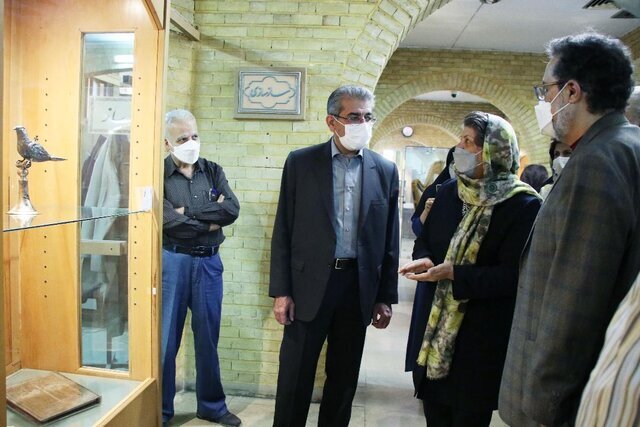Silverworks by Iranian-Armenian artisans on show in Tehran

TEHRAN –An exhibition featuring some 130 silverworks made by Iranian-Armenian silversmiths opened in Tehran on Tuesday.
Organized by the Traditional Arts Research Group of the Research Institute of Cultural Heritage and Tourism, in collaboration with Arch Bishop Ardak Manoukian Museum, the exhibit is showcasing artworks by several Armenian masters of silver crafts including Herach Megerdoun, Sarou Megerdoun, Armin Vartin, and Simon Malekian, ISNA reported on Wednesday.
Silverware, pictures, and decorative objects engraved using various techniques, a copy of the Bible with silver engraving on the cover, engraved silver cups, and instruments used in religious ceremonies are all among the artworks on display.
The exhibit will run until October 25 at the Ministry of Cultural Heritage, Tourism, and Handicrafts.
Iranians have been skillful metalworkers since the Achaemenid period (559–330 BC) when they were already acquainted with various techniques such as chasing, embossing, casting, and setting with precious stones.
According to Britannica Encyclopedia, statuettes of gold and silver are known from the 5th century BC, and vessels of silver and gold from this time take the form of phials, conical cups, vases, and rhyta (drinking cups in the shape of an animal’s head).
The Oxus treasure in the British Museum and the Susa find in the Louvre, Paris, are good examples of such work. During the Parthian period (247 BC – 224 CE), silverwork and goldwork were strongly influenced by Hellenistic predilection for richly decorated bowls and dishes.
The zenith of old Iranian metalwork, however, was reached during the Sasanid period (224–651), when craftsmen achieved great variety in shape, decoration, and technique. Drinking vessels (stem cups and cups with handles), ewers, oval dishes, platters, and bowls are the dominant forms; hunting scenes, drinking scenes, and animals are represented in high relief. The patterns were cut out of solid silver or made separately in sheets and then soldered to the vessel. From this time onward cloisonné enamel was used for jewelry.
ABU/AFM
Leave a Comment